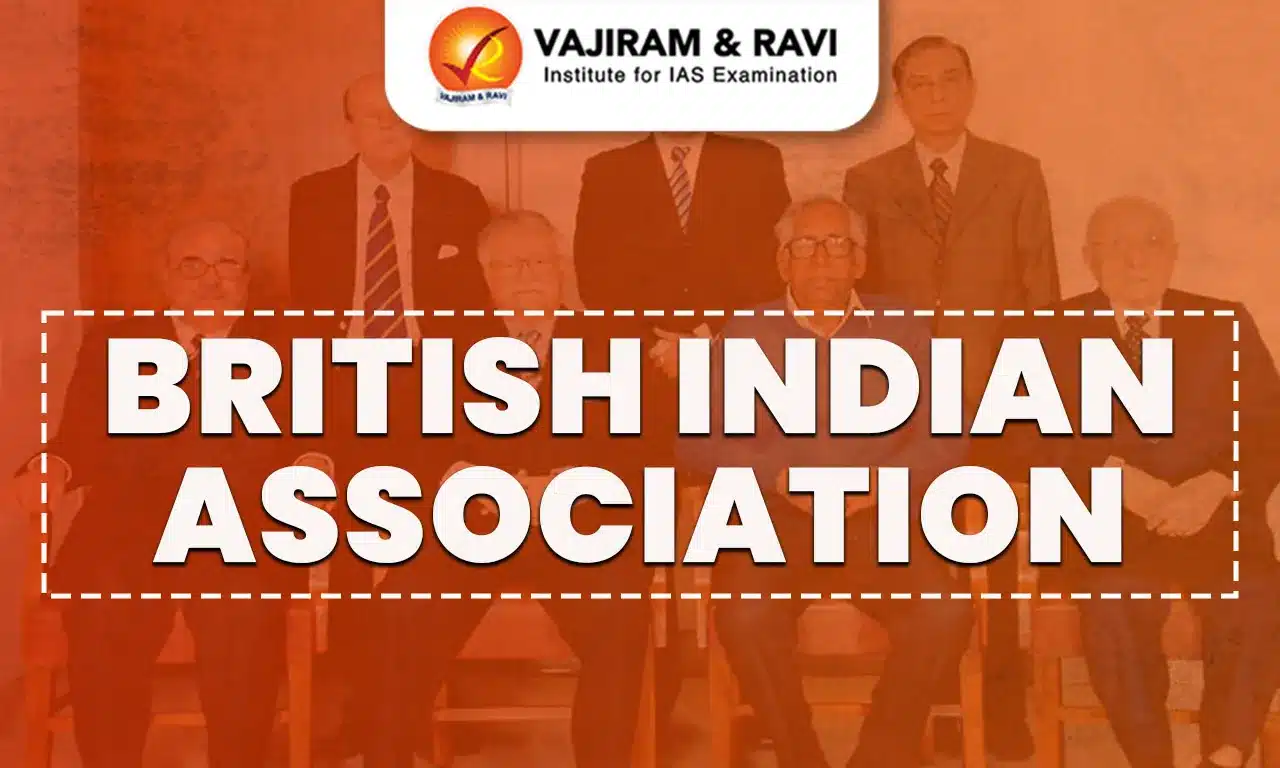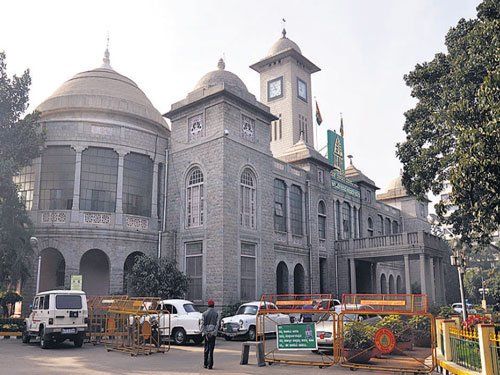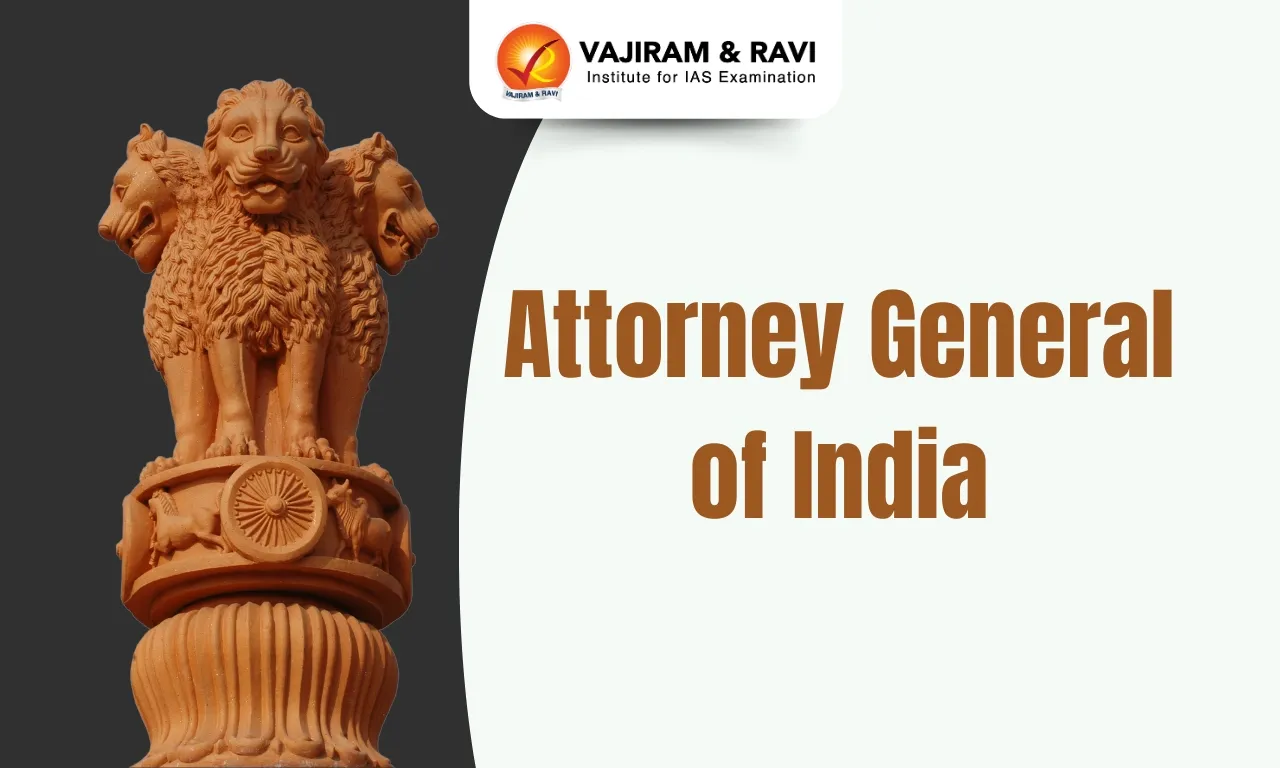The British Indian Association, established in 1851, in Calcutta, was one of the first political organisations in colonial India. The association, composed of the Indian elite, primarily Zamindars and the educated class, laid the groundwork for political advocacy and administrative reforms in British India.
It was founded to represent the interests of Indian landowners and to provide a forum for petitioning the British government on issues of governance, legal reform, and revenue policy. Though it had a significant early impact, its elitist nature and limited representation hampered its long-term success.
British Indian Association Background
The British Indian Association was founded on October 29, 1851, in Calcutta by merging two previous political organisations: the Landholders' Society and the Bengal British India Society. This consolidation was in response to the European community's opposition to four proposed bills drafted by Bethune, a law member of the British Government, in 1849.
- These bills sought to extend the jurisdiction of the East India Company's criminal courts over British-born subjects.
- The Indian community supported these bills, but the European community in Bengal opposed them, labelling them as "Black Acts" and staging protests.
- Leadership: Raja Radhakanta Deb served as the President, Debendranath Tagore as the Secretary, and the other members included Ramgopal Ghosh, Peary Chand Mitra, and Krishnadas Pal.
- Membership: The association's membership was limited to Indians, particularly the landowners and educated elite.
British Indian Association Objectives
The British Indian Association's objectives were to improve governance, legal systems, and land revenue policies in India while it was under British rule. The objectives were as follows:
- Local Administrative Reforms: The association advocated for improvements in local government to ensure effective governance that benefited Indian landowners and society.
- Petitioning for Legislative Changes: In 1852, the association petitioned the British Parliament for reforms during the East India Company's charter renewal, advocating for a separate legislature, the separation of executive and judicial functions, salary cuts for high-ranking officers, and the abolition of certain taxes, including the salt tax.
- Advocacy for Legal and Judicial Reforms: The organisation worked to improve the judicial system, protect property rights, and provide relief from pressures of the revenue system on landholders and the East India Company's monopolistic practices.
British Indian Association Demands
The British Indian Association petitioned for a separate legislature, division of executive and judicial powers, reduced officer salaries, and tax abolition, leading to partial acceptance of the Charter Act of 1853 with six new legislative council members.
- Demand for a Separate Legislature: The British Indian Association called for the establishment of a legislature with popular representation, ensuring that Indian voices would be included in the law-making process.
- Separation of Executive and Judicial Powers: The association advocated for a clear division between executive and judicial functions to prevent the overlap of powers and ensure fairness in governance.
- Reduction of Salaries for Senior Officers: It proposed the reduction of salaries for higher-ranking British officers, arguing that these funds could be better utilized for public welfare.
- Abolition of Burdensome Taxes: The association sought the removal of oppressive taxes, such as salt duty, abkari (excise) duties, and stamp duties, which placed undue financial burdens on the Indian population.
- Partial Acceptance in the Charter Act of 1853: These demands were partially met when the Charter Act of 1853 introduced six additional members to the Governor-General’s council for legislative purposes, providing limited Indian participation in governance.
British Indian Association UPSC PYQs
Question 1: Consider the following pairs: (UPSC Prelims 2017)
- Radhakanta Deb — First President of the British Indian Association
- Gazulu Lakshmi Narasu Chetty — Founder of the Madras Mahajana Sabha
- Surendranath Banerjee — Founder of the Indian Association
Which of the above pairs is/are correctly matched?
- 1 only
- 1 and 3 only
- 2 and 3 only
- 1, 2 and 3
Answer: (b)
Last updated on December, 2025
→ Check out the latest UPSC Syllabus 2026 here.
→ Join Vajiram & Ravi’s Interview Guidance Programme for expert help to crack your final UPSC stage.
→ UPSC Mains Result 2025 is now out.
→ UPSC Notification 2026 is scheduled to be released on January 14, 2026.
→ UPSC Calendar 2026 is released on 15th May, 2025.
→ The UPSC Vacancy 2025 were released 1129, out of which 979 were for UPSC CSE and remaining 150 are for UPSC IFoS.
→ UPSC Prelims 2026 will be conducted on 24th May, 2026 & UPSC Mains 2026 will be conducted on 21st August 2026.
→ The UPSC Selection Process is of 3 stages-Prelims, Mains and Interview.
→ UPSC Result 2024 is released with latest UPSC Marksheet 2024. Check Now!
→ UPSC Prelims Result 2025 is out now for the CSE held on 25 May 2025.
→ UPSC Toppers List 2024 is released now. Shakti Dubey is UPSC AIR 1 2024 Topper.
→ UPSC Prelims Question Paper 2025 and Unofficial Prelims Answer Key 2025 are available now.
→ UPSC Mains Question Paper 2025 is out for Essay, GS 1, 2, 3 & GS 4.
→ UPSC Mains Indian Language Question Paper 2025 is now out.
→ UPSC Mains Optional Question Paper 2025 is now out.
→ Also check Best IAS Coaching in Delhi
British Indian Association FAQs
Q1. When was the British Indian Association founded?+
Q2. Who were the key leaders of the British Indian Association?+
Q3. What organizations merged to form the British Indian Association?+
Q4. What was the purpose of the British India Association?+
Q5. When did the British Indian Association cease to exist?+

















